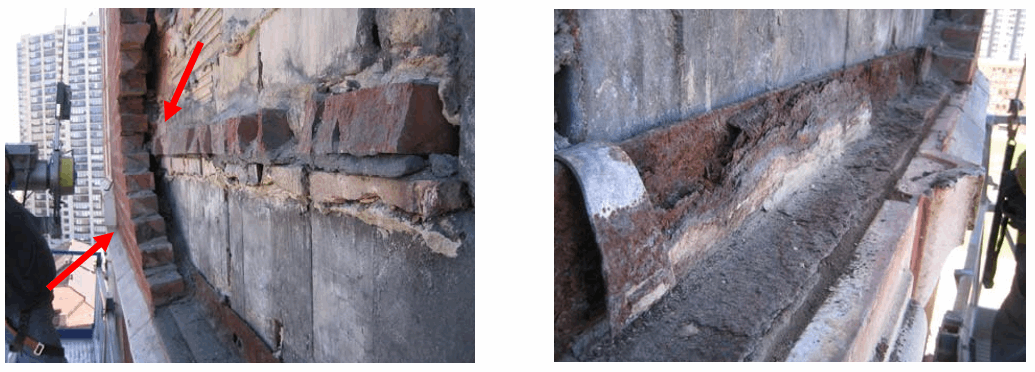E.A. Gerns1 and M.E. Novesky2
- Principal, Wiss, Janney, Elstner Associates, Inc., 10 South LaSalle Street, Suite 2600, Chicago, IL. 60603, egerns@wje.com
- Senior Associate, Wiss, Janney, Elstner Associates, Inc., 10 South LaSalle Street, Suite 2600, Chicago, IL. 60603, mnovesky@wje.com
ABSTRACT
Prior to a comprehensive building facade restoration, stabilization of significantly distressed masonry is often necessary to provide public safety and prevent further damage to building facades. Since the development of the skeleton structural frame system, veneer wall systems have provided a barrier from exterior elements and defined aesthetics of the building envelope. Masonry facades are traditional laterally tied to back-up materials or structural members with ferrous metal wall ties, bent bars and rods. Gravity loads are typically resolved with horizontal steel members that transfer load back to the building’s structural system or adjacent masonry jambs.
Corrosion of underlying metal components, along with environmental and material related movement within masonry walls can cause distress to masonry cladding systems and create unsupported, unstable elements and potentially hazardous conditions. Options to address these conditions include pinning, strapping, netting, enclosure, and in some instances removal of a unit(s) and securing the remaining wall areas with support members and a weather tight enclosure. However, to determine an appropriate stabilization method, an understanding of the wall construction and backup material is critical. The longevity of supplemental anchorage as well as aesthetic appearance of the building facades after such implementation should also be considered.
This paper will discuss various distressed conditions which have been encountered by the authors in masonry facades and the mechanisms of deterioration contributing to the distress. The second part will review supplemental stabilization approaches, concerns, and related issues which should be considered and understood before deciding on the implementation of such stabilization as well as sensitivity which is often necessary to achieve public safety while not impeding future repair and restoration efforts.
KEYWORDS: stabilization, supplemental anchorage
C5-4



